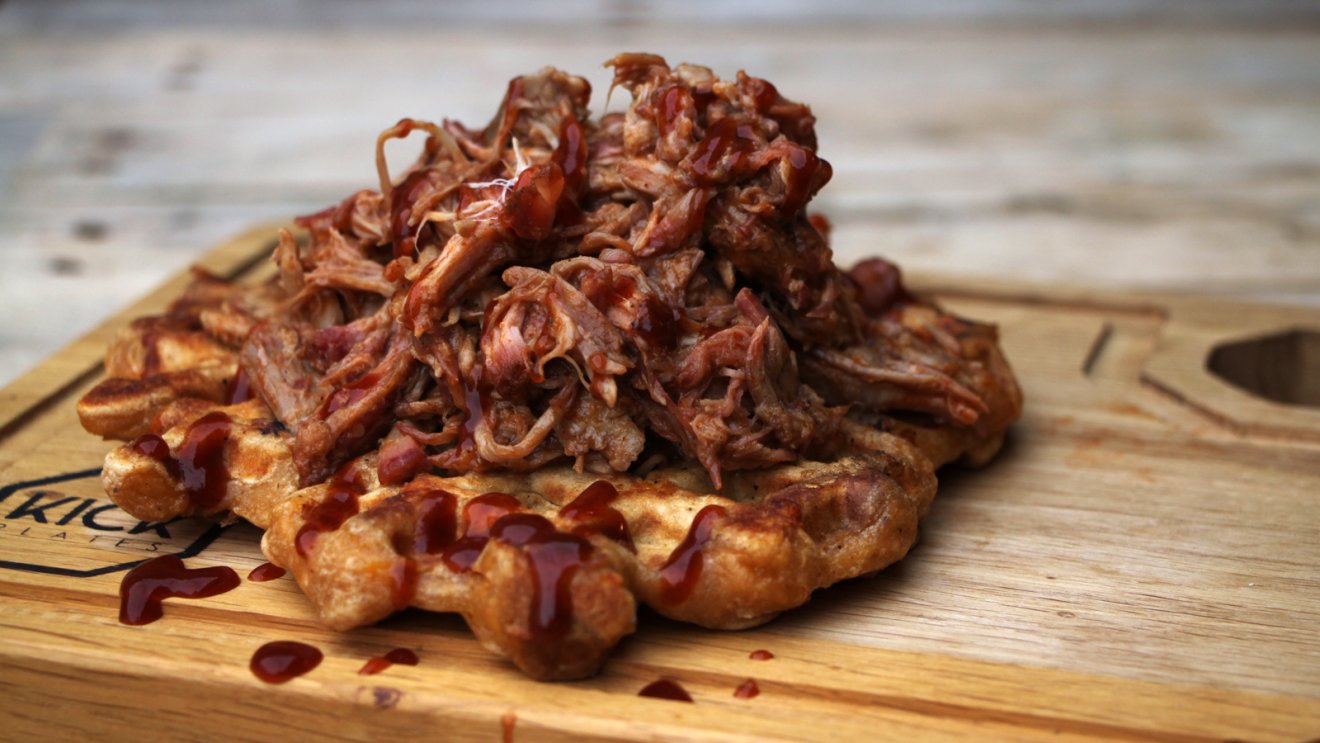Pulled Pork: 190°F vs. 205°F - Unveiling the Perfect Temperature for Tender and Flavorful Results
Pulled pork is a beloved dish in the world of barbecue, known for its tender, melt-in-your-mouth texture and smoky flavors. However, there is an ongoing debate among pitmasters and cooking enthusiasts regarding the ideal internal temperature for achieving the best pulled pork. In this article, we will explore the differences between cooking pulled pork to 190°F and 205°F, unraveling the impact of temperature on tenderness and flavor.

Pulled Pork Wafels
1. Understanding Pulled Pork:
Before delving into the temperature debate, it's important to understand what pulled pork is and why it's so popular.
Pulled pork is typically made from pork shoulder or Boston butt, slow-cooked to perfection until the meat becomes tender enough to be easily pulled apart with forks.
This slow-cooking process allows the collagen and connective tissues in the meat to break down, resulting in succulent and flavorful strands of pork.
2. Cooking Pulled Pork to 190°F:
Many traditionalists argue that the optimal internal temperature for perfectly cooked pulled pork is 190°F.
At this temperature, the meat has reached the point where the collagen has broken down sufficiently, resulting in tender strands of pork that easily pull apart.
Cooking to 190°F typically requires a longer cooking time, allowing the meat to fully develop its flavors and achieve that sought-after "fall off the bone" tenderness.
3. Cooking Pulled Pork to 205°F:
In recent years, there has been a shift towards cooking pulled pork to a higher internal temperature of 205°F.
Advocates of this higher temperature argue that it results in even more tender and juicier pulled pork.
At 205°F, the collagen and connective tissues have broken down further, resulting in meat that is incredibly tender and moist.
The higher temperature also helps to render more fat, enhancing the overall flavor and juiciness of the meat.
4. Texture and Tenderness:
The internal temperature at which pulled pork is cooked directly affects its texture and tenderness.
Cooking to 190°F produces pork that is tender and easily pulled apart, while still maintaining some texture and chew.
On the other hand, cooking to 205°F yields an incredibly tender and moist pulled pork with a more "melt in your mouth" consistency.
The choice between the two temperatures ultimately depends on personal preference and desired texture.
5. Flavor Development:
The temperature at which pulled pork is cooked also impacts its flavor profile.
Cooking to 190°F allows for a longer cooking time, allowing the flavors to develop and deepen.
This slower cooking process results in a more pronounced smoky flavor and a richer overall taste.
Cooking to 205°F may result in a slightly different flavor profile, with the higher temperature potentially intensifying the smoky flavors and enhancing the meat's natural sweetness.
6. Resting Period:
Regardless of the chosen internal temperature, allowing the cooked pulled pork to rest is essential.
Resting the meat for a period of time after it has reached the desired temperature allows the juices to redistribute, ensuring a moist and flavorful end product.
This resting period also allows the meat to relax, making it easier to pull apart and resulting in a more enjoyable eating experience.

Pulled pork 190 vs 205: Best Temp to Pull Pork
The decision between cooking pulled pork to 190°F or 205°F ultimately comes down to personal preference and desired texture. Cooking to 190°F produces tender and flavorful pulled pork with a slight chew, while cooking to 205°F results in an exceptionally tender and juicy end product. Both temperatures have their merits and can deliver delicious pulled pork that will satisfy your barbecue cravings. So, whether you prefer your pulled pork slightly firmer or incredibly tender, the key lies in mastering the cooking technique and experimenting to find your perfect temperature.